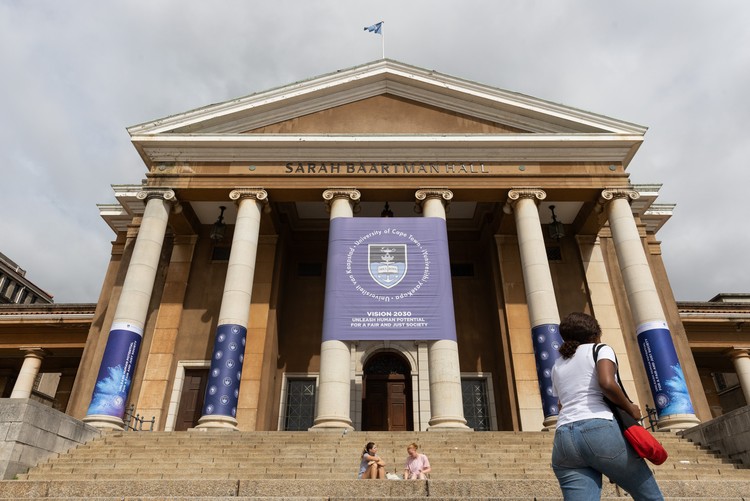SA has world class medical researchers – they can and should be bailed out
Medical scientists at the University of Cape Town have been hit especially hard by funding cuts made by the US government. Archive photo: Ashraf Hendricks.
South Africa has many of the world’s best HIV and TB researchers. Until recently, this research excellence was widely recognised by the fact that local research groups kept winning grants to conduct critically important studies. These grants were not given away as charity or international aid but were awarded through highly competitive processes.
Consistently, local researchers have outcompeted researchers in other countries that have large HIV and TB epidemics. Over the past few decades, the country has built up a network of scientific groups and infrastructure that supports high quality research. This is reinforced by several excellent university departments and a solid regulatory framework to ensure research is done ethically.
If you want to know whether a new TB test or an injection that prevents HIV works, South Africa is quite simply the best place to conduct the studies.
Currently, the South African government allocates about R850-million to the South African Medical Research Council (SAMRC) per year. This is a tiny fraction of the national budget. The SAMRC is by far the largest local funder of medical research.
The United States government has been an even larger funder of health research in South Africa. That money comes mostly through competitive grants awarded by the United States National Institutes for Health (NIH), the world’s largest health research funder. The NIH made those investments because many American citizens are living with HIV and Americans also get TB. Right now the US is battling a TB outbreak in Kansas.
It is clear that clinical trials conducted here at the tip of Africa, benefit patients in the US, and throughout the world.
In an analysis published earlier this month, Spotlight estimated that every year about R800-million in NIH grants goes to studies where South African researchers are the primary investigators. Since South African researchers also participate in large multi-country trials where they are not the primary investigators, the real NIH investment in South African research groups is likely much higher. Professor Glenda Gray, previous head of the SAMRC, has been quoted saying as much as $250-million (about R4.5-billion) per year might be lost to medical research in South Africa.
Some NIH research grants have been abruptly terminated in recent weeks. Given the rhetoric from the Trump administration, researchers are right to fear that all NIH grants to South African researchers are under threat. South Africa is not the only country impacted; NIH grants are being slashed across the board.
Catastrophic consequences
The consequences of these terminations are likely to be catastrophic.
First, it will mean that some active clinical trials are stopped, leaving study participants in limbo, a breach of medical ethics and basic human decency.
Second, it will mean that the development of new tests, treatments, and vaccines for HIV, TB and other diseases will be delayed, or in some cases completely derailed.
And third, it will destroy the unique research capacity we have built in South Africa. Research groups and university departments are set to be decimated. Research careers are being stalled. Students may lose funding for their PhD studies.
The good news is that the sums of money involved are not outlandish in the context of South Africa’s budget. In fact, we’ve spent orders of magnitude more over the years bailing out failing entities like SAA. Our government has previously committed to spend 1.5% of GDP on R&D by 2030. At last count, we were below 1%.
Investments in medical research have positive knock-on effects such as the training and development of young scientists, the expansion of scientific infrastructure, and in some cases spin-off technologies that create new products. It can also help build the skills base needed if the government is to make good on its promises of greater local production of medicines. And, of course, medical research can help find better solutions to the many health issues impacting the lives of people in South Africa.
It is unlikely that every NIH grant could, or arguably should be saved. South Africa’s funding priorities will not always align with those of the NIH. But some kind of bailout is clearly needed to avert the loss of so much human capital.
One way forward might be for the SAMRC to be allocated an extra R1-billion per year. These funds could then be distributed to keep at least some clinical trials and other research efforts on track, prioritising those that are most closely aligned with South Africa’s health needs.
For now, the sheer scale and the abruptness of the NIH cuts mean that medical research as we know it in South Africa is facing an existential threat. The question is whether the government will have the vision to turn this crisis into a new start.
Support independent journalism
Donate using Payfast

Next: R21-million stadium in Limpopo left incomplete and abandoned
Previous: Mixed reviews for Cape Town SASSA offices on grant payment day <div></div><div></div>
© 2025 GroundUp. This article is licensed under a Creative Commons Attribution-NoDerivatives 4.0 International License.
You may republish this article, so long as you credit the authors and GroundUp, and do not change the text. Please include a link back to the original article.
We put an invisible pixel in the article so that we can count traffic to republishers. All analytics tools are solely on our servers. We do not give our logs to any third party. Logs are deleted after two weeks. We do not use any IP address identifying information except to count regional traffic. We are solely interested in counting hits, not tracking users. If you republish, please do not delete the invisible pixel.

